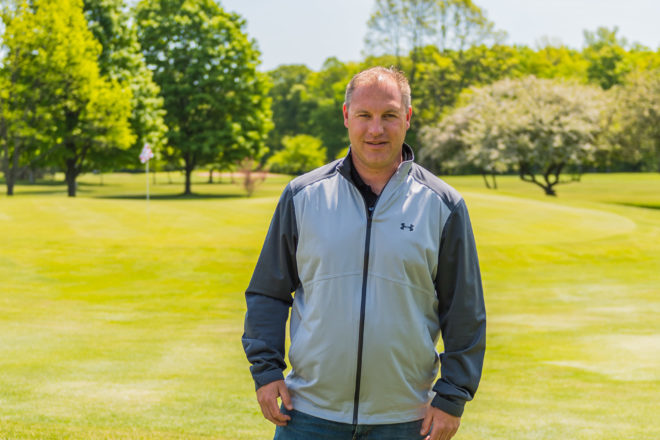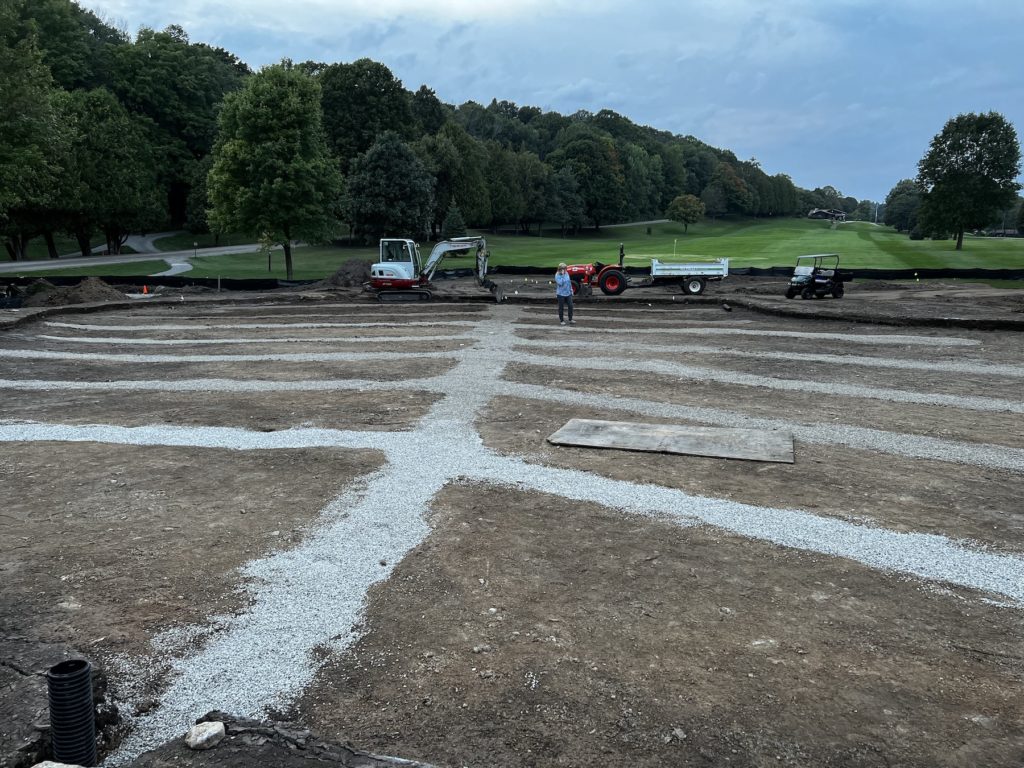Becker Helps Make Peninsula Golf Course ‘Super’ for All
- Share
- Tweet
- Pin
- Share

No course in Door County has seen more changes through the years than Peninsula State Park Golf Course. And, because it’s under the umbrella of the not-for-profit Peninsula Golf Associates, profits go back into maintaining the course or making it better.
Golfers will continue to see tweaks and adjustments, but they’ll likely be much less substantial than the transitions made from the original, crude construction prior to the 1920s; the modernization and expansion during the 1920s and ’30s; and Lawrence Packard’s 1960s redesign, including the addition of the spectacular third, 10th and 12th holes.
Door County native and Peninsula course superintendent Michael Becker will oversee strategic tree trimming and management this year and said he looks forward to opening a completely rebuilt green for hole #1 sometime early next season – and there’s potential for renovating a couple of holes at the course in the years to come.
“We’re doing some tree pruning right now to get rid of some low-hanging limbs to provide golfers with more options for their next shots, rather than being penalized after hitting good shots,” he said. “Some of our holes are pretty tight, and there are a lot of tree lines. “We’re also working to keep greens firm enough, but fair, so you can hit any kind of shot you want into those greens, for the beginning player to the accomplished player.”
Becker brought two decades of golf knowledge with him to Peninsula in 2017. At 13, in 1998, he started working at Maxwelton Braes Golf Course in Baileys Harbor.
“I’d go out there, and I’d hand-water greens at night,” he said.
Playing high school golf, and also frequenting the courses at Kohler, where his uncle Paul was the director of golf for Kohler Worldwide, he soaked in more knowledge. While at Maxwelton Braes, Becker added resort maintenance and some management to his credentials, and he also did planning for dinners and golf outings.
Horseshoe Bay Golf Club went under construction in 1998. He applied in 1999 and worked there for 17 years before taking the job at Peninsula.
Today, Becker also makes time to play, whether that means joining fellow superintendents for a round elsewhere in the state or checking to see what friends at nearby courses are doing.
“We’re just really busy up here, and our property takes precedence for my attention,” he said. “But I do get to venture to golf outings and some getaway days to play some golf. You always want to look around and see what your friends are doing with golf course setups, and how they have supplies on the golf course, whether it’s a lot of bunker rakes or not a lot of bunker rakes.”
Becker is always on the lookout for ways to improve the course and the golfer experience at Peninsula.

He played a big role in one of Peninsula’s biggest successes in recent years: restoring the greens that suffered severe ice damage during the winter of 2019. Peninsula historically had Poa annua (annual bluegrass) on the greens, but the ice killed much of that cool-weather grass on 13 greens.
“We had to reseed everything, which was a daunting process, while being open for play,” Becker said. Some TLC for the most affected greens, and the careful and thorough introduction of Flagstick creeping bentgrass on all of the greens, have proved “phenomenal” for improving the playability of all of Peninsula’s greens, Becker said. Seed Research of Oregon says its variety of bentgrass grows quickly and, desirably, crowds out Poa.
He said the greens crew could mow tight, roll the greens more frequently and make them fast, but the staff and management keep them relatively slow, rarely faster than 9 or 9.5 on the Stimpmeter. They keep in mind that some greens have severe slopes, and the course attracts a lot of beginners and one-week-per-year golfers, as well as accomplished players. So, he said, it does not need to serve private-club players or pros who expect lightning-quick greens of 10-13.
Becker takes pride in having a role – along with the “PGA,” general manager Jason Daubner; and golf design/build leader Todd Quitno – in restoring green #1 this fall.
Becker saw the problems on the old green while monitoring the speed of play and witnessed poor drainage there. During a weekly, two-person scramble league, he and his golf partner also experienced the difficulties of hitting approach shots to the old dome-shaped green. He said even when hitting two balls into the green and choosing the best shot, they were pleased to card a par and not surprised to take a bogey.
This fall, contractors installed new drainage features beneath a new green for hole #1, and they rebuilt and lessened slopes around the green and constructed a properly draining sand bunker, cut left front of the green.
“The green that was there had more of a dome feel to it and a severe pitch from back to front, so it was really hard to keep the playability of the hole fun for people of all abilities,” Becker said.
The redesign should help golfers get off to a better start, with easier club selection.
“The first and last hole are really your focal point after your round is done,” Becker said. “How did you start, and how did you finish?”

